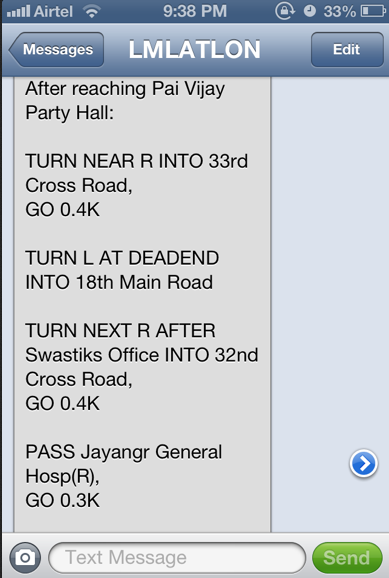
"We were trying to adapt something that worked in the West to India," Rahul says, describing his efforts with Onze Technologies. But transplanting mapping software to Indian cities is not a simple feat. "It doesn't quite work out," he says.
For one, the landscape is entirely different. Very few urban pockets are laid out in a grid. They're filled with winding, narrow roads prone to sudden turns and stops. Addresses are often out of order or sight. Streets pop up, change names and add new commercial inhabitants all the time.
Another obstacle is cultural. "People are not used to maps," Rahul explains. Giving directions in India is an idiomatic art, well-rehearsed and rarely done following formal strictures. He goes on: "I can guarantee you nobody will say, 'head south.'" Rather than cardinal directions, people will navigate the lost using a series of routes and familiar landmarks.
For a newcomer, the directions ("straight, straight, left") can be fruitless. And, I soon discovered, they can be just as ineffective for people who share a mother tongue.
Why It's Nearly Impossible to Make GPS Work for India - Mark Bergen - The Atlantic Cities)
No comments:
Post a Comment